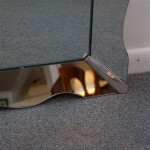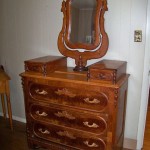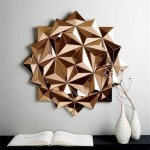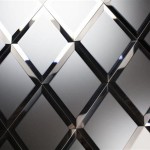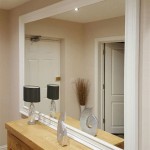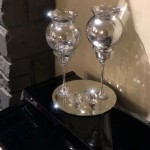How To Hang A Tilted Mirror On The Wall
Hanging a tilted mirror, whether for stylistic reasons or functional purposes like a leaning floor mirror, requires a slightly different approach than hanging a traditional flush-mounted mirror. This guide outlines the necessary steps and considerations for safely and securely hanging a tilted mirror on the wall.
Assessing the Mirror and Wall
Before beginning, careful assessment of both the mirror and the wall is crucial. Determine the mirror's weight and dimensions. Heavier and larger mirrors will require more robust hanging hardware and potentially additional wall support. Inspect the wall to locate studs for optimal support, especially for heavier mirrors. If studs are not available or suitable, appropriate wall anchors will be necessary. The wall material itself—drywall, plaster, concrete—will also dictate the type of hardware used.
Choosing the Right Hanging Hardware
The angle of tilt significantly influences the type of hardware required. For slightly tilted mirrors, heavy-duty D-rings or mirror clips combined with picture wire may suffice. However, for a more pronounced tilt, specialized hardware like offset clips or adjustable mirror brackets are recommended. These brackets offer greater stability and prevent the mirror from slipping or sliding down the wall. For leaning floor mirrors, secure floor stands or wall-mounted brackets designed specifically for this purpose provide the necessary support and prevent tipping.
Measuring and Marking for Placement
Accurate measurement is essential for achieving the desired tilt and placement. Begin by determining the desired height and angle of the mirror. Use a level to mark a straight horizontal line on the wall as a reference point. From this line, measure and mark the placement of the hanging hardware on the back of the mirror. Ensure the measurements correspond to the type of hardware being used. For example, D-rings should be placed equidistant from the top edge and sides of the mirror, while offset clips may have specific placement requirements outlined by the manufacturer.
Installing the Wall Hardware
Once the mirror's hanging points are marked, transfer these measurements to the wall. Use a level to ensure accurate placement. If using studs, pre-drill pilot holes slightly smaller than the screws to prevent the wood from splitting. If using wall anchors, follow the manufacturer's instructions for proper installation. Ensure the chosen anchors are rated for the weight of the mirror. Secure the wall-mounted portion of the chosen hanging hardware (brackets, hooks, etc.) to the wall, ensuring they are firmly attached.
Hanging the Mirror
With the wall hardware securely in place, carefully lift the mirror and engage it with the installed hardware. For lighter mirrors, one person may be able to manage this task. Heavier mirrors will require two people to lift and position the mirror safely. Once the mirror is hanging, use a level to verify the desired tilt angle and adjust as needed. For leaning floor mirrors, position the mirror against the wall at the desired angle and ensure the base or wall-mounted bracket is securely in place.
Securing the Mirror
After the mirror is hung and positioned correctly, it’s essential to secure it to prevent accidental shifting or tipping. For slightly tilted mirrors, small adhesive bumpers placed on the bottom corners can help maintain the desired angle and protect the wall. For leaning floor mirrors, ensure the base is stable and consider using anti-slip pads underneath to prevent movement. For mirrors with a more pronounced tilt, safety chains or cables can be attached to the back of the mirror and anchored to the wall, providing an additional layer of security and preventing the mirror from falling in case the primary hanging hardware fails.
Final Adjustments and Considerations
Once the mirror is securely hung, take a step back to assess the overall aesthetic and ensure the desired tilt is achieved. Make any necessary minor adjustments to the angle or placement. Clean the mirror surface to remove any fingerprints or smudges. For larger or heavier mirrors, periodically check the hanging hardware to ensure it remains secure. Consider the surrounding environment and avoid placing tilted mirrors in areas with high traffic or where they could be easily bumped or knocked over.

Tilted Mirror

Why Frames Tilt Forward The 100 Billionth Person

How To Hang A Heavy Full Length Leaner Mirror On The Wall House Of Hepworths

How To Put A Mirror On An Angled Wall Over Bathroom Sink Vanity

How To Secure A Leaning Mirror The Wall Diy Playbook

How To Hang A Heavy Full Length Leaner Mirror On The Wall House Of Hepworths

How To Secure A Heavy Leaning Floor Mirror The Wall Love Our Real Life

How To Hang A Heavy Full Length Leaner Mirror On The Wall House Of Hepworths

Leaning Pictures And Mirrors The Easy Alternative To Hanging Art

Why Frames Tilt Forward The 100 Billionth Person

